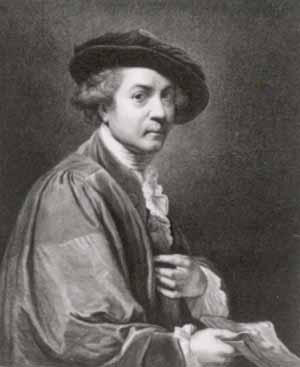John Keyse Sherwin facts for kids
John Keyse Sherwin (born 1751, died 1790) was a talented English artist. He was known for his amazing engravings and paintings.
Contents
Early Life and Art Training
John Keyse Sherwin was born in East Dean, Sussex. His father worked as a wood-cutter. John helped his father until he was about 17 years old. He showed a natural talent for art by copying small paintings called miniatures. Because of this, William Mitford, his father's landlord, decided to help him.
John went to London to study art. He first learned from John Astley. Then, he spent three years studying with Francesco Bartolozzi, a famous engraver. It is thought that John did a lot of the work on a well-known engraving called "Clytie," which was published under Bartolozzi's name.
Becoming a Royal Academy Artist
John Sherwin became a student at the Royal Academy in London. He won a silver medal for his skills. In 1772, he won a gold medal for his painting titled "Coriolanus taking Leave of his Family."
From 1774 to 1780, John showed his chalk drawings and engravings at the Royal Academy. He opened his own studio in St James's Street. There, he worked as a painter, designer, and engraver. He became very popular and met many important people in society.
Popular Works and Royal Connections
One of his most famous drawings was "The Finding of Moses." This artwork included portraits of the Princess Royal of England and other important ladies. Even though it might not have been his best artistic work, people loved it. When John made engravings of it, they sold very well.
In 1785, John Sherwin became the official engraver to the King. He also worked as the engraver for the Prince of Wales, who later became King George IV. His work brought him a lot of money. He even had a student named John Thomas Smith, who trained with him for three years.
Sherwin's Artistic Legacy
John Keyse Sherwin is most remembered for his amazing engravings. He was very unique because he could work with either hand on his engraving plates! This means he was ambidextrous.
His drawings were very accurate. The lines he used in his engravings were excellent. He was also very good at showing different textures in his work. Some of his most famous engravings include:
- "Holy Family" after Nicolas Poussin
- "Christ Bearing the Cross" after Bartolomé Estéban Murillo
- A portrait of the Marquis of Buckingham after Thomas Gainsborough
- A portrait of William Pitt
These works are considered very important among English line-engravers. He also created engravings based on the works of other artists like Pine, Dance, and Kauffman.


